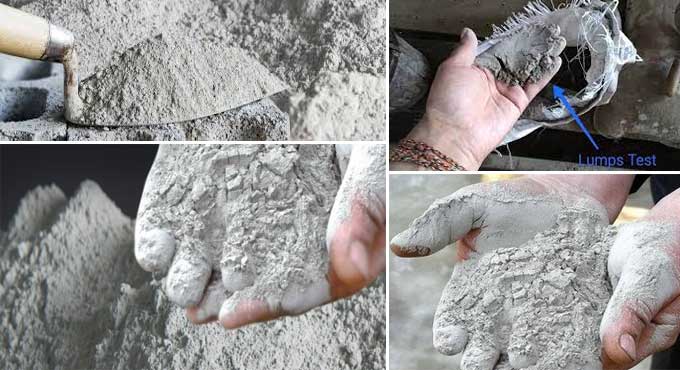
Tests of Cement Fineness in 3 Ways and Their Workflow
There are different sizes of cement particles, some of which are fine and some coarse. Cement sets faster in fine particles than coarse particles, as fine particles are more easily hydrated and set than those that are more difficult to hydrate and set. Therefore, cement particles should have a medium particle size, not too fine or too coarse.
Requirement of the exact Cement Particle Size
As per IS Recommendations, cement fineness should not exceed 10% on a sieve that has a standard sieve size of 90mm. There are indeed different kinds of cement available on the market, and their fineness varies as the percentage of fineness of the each cement must not exceed 10% by weight.
Cement Fineness
Rapid hardening cement, Portland Pozzolana cement, and rapid hardening cement have more fine particles than ordinary Portland cement, as described in the explanation above.
Cement fineness refers to the size of the cement particles as well as the specific surface area, which indirectly affects the heat of hydration. Cement is fine if it retains less than 10% of its residue in the Sieve test by sieve method.
Importance of Cement Fineness
The fineness of cement is important for the following reasons:
- When compacting with a vibrator can reduce bleeding, increase cement finance, and increase the cohesion of concrete mix.
- Cement can take more time to set after it is mixed with water.
- It is also possible for fineness to affect workability.
- By measuring the surface area of particles of cement per unit mass, fineness can be measured indirectly.
- It is the fineness of the cement that increases its strength, primarily during its first seven days.
- As cement particles become finer, hydration rates will increase.
- Finer cement reacts more strongly with alkalis and shrinks and cracks more readily.
Types of Fineness Test
Sieve Method
Cement samples are sieved through standard IS sieves to determine the fineness of the cement. On a 90-micron sieve, the residual cement particles size is determined by weight, and the percentage retained by residue is calculated. A cement's fineness is known as its porosity.
Workflow of Sieve Method
- Take a piece of cement and rub it between your hands. There should be no lumps in the Fineness test sample.
- Calculate W1 by weighing 100 gm of cement sample.
- Close a 90 cm sieve with the lid after dropping 100 gm cement into it.
- For 15 minutes, agitate the sieve by planetary and linear movements with your hands or by using a sieve shaking machine.
- W2 corresponds to the weight of the retained residual cement left behind after passing through the 90 m sieve.
Wagner Turbidimeter Test
Kerosene uses to disperse this test cement in a rectangular glass tank. Parallel light beams are passed through the solution and strike the photoelectric cell's sensitivity plate using parallel light rays.
As the particles are falling through the solution, it is possible to secure information regarding the surface area and size of the particles by measuring the current generated by the cell at regular intervals as the particles are falling in the solution.
Air Permeability Test
An air pressure test cell and a flow meter determine the volume of air passing per second through the capillary tube of the apparatus. Measurement of air pressure are used a manometer and a pressure gauge.
Workflow of Air Permeability Test
- With the air running, a manometer is attached to the top of the permeability cell, which is connected to the top of the cement sample.
- Cement sample of 20 mm height placed on a plate with 40-micron perforations.
- There is not much connection between the manometer and the permeability cell's lower end.
- In the flow meter, the flow rate adjusts so the pressure difference (h2) is 30-50 cm, and the reading in the manometer is determined (h1) when h1/h2 is expressed as a constant ratio, and then the process is repeated until a particular surface is obtained.
To get more details, watch the following video tutorial.
Video Source: Civil Site visit


